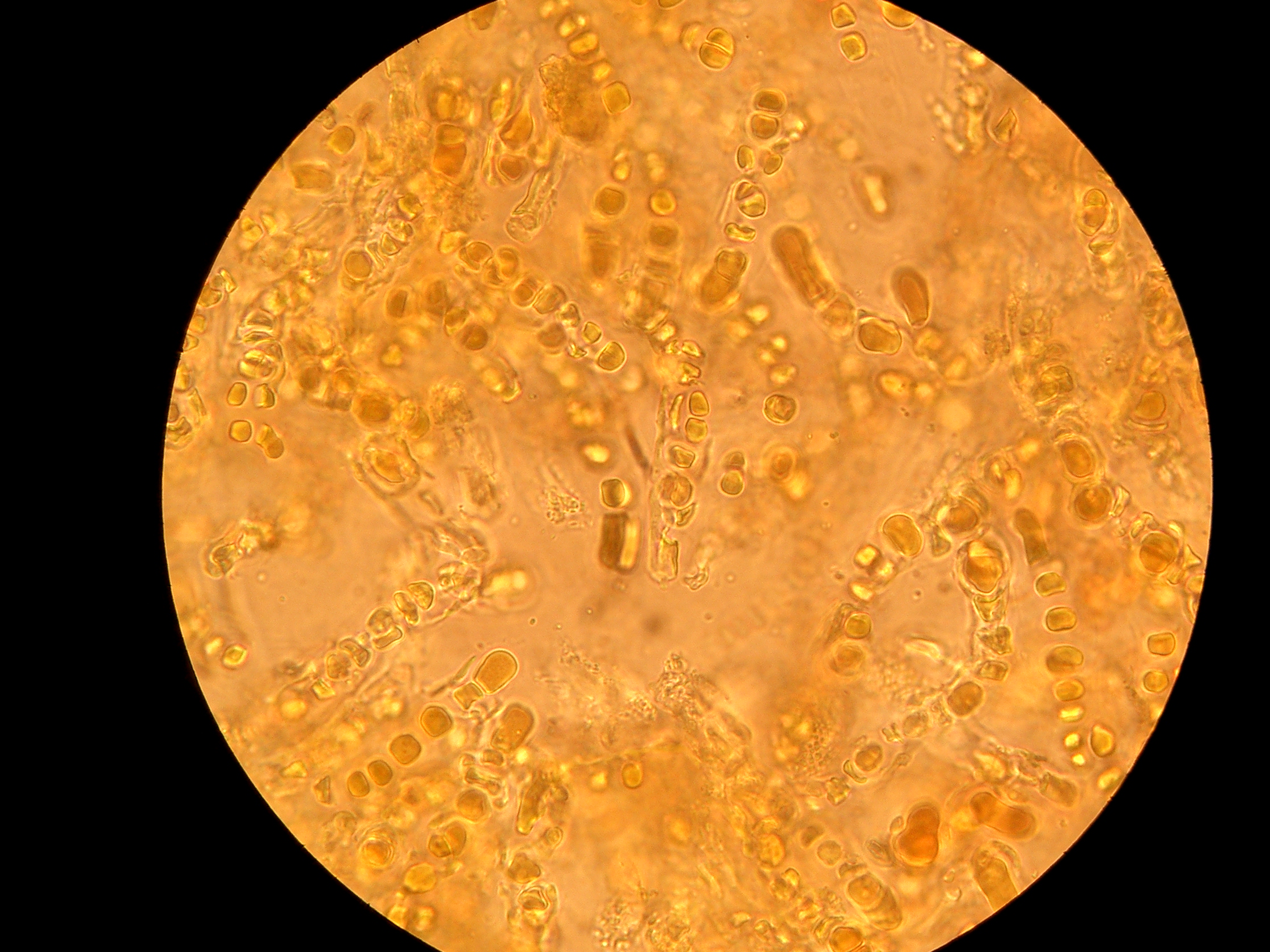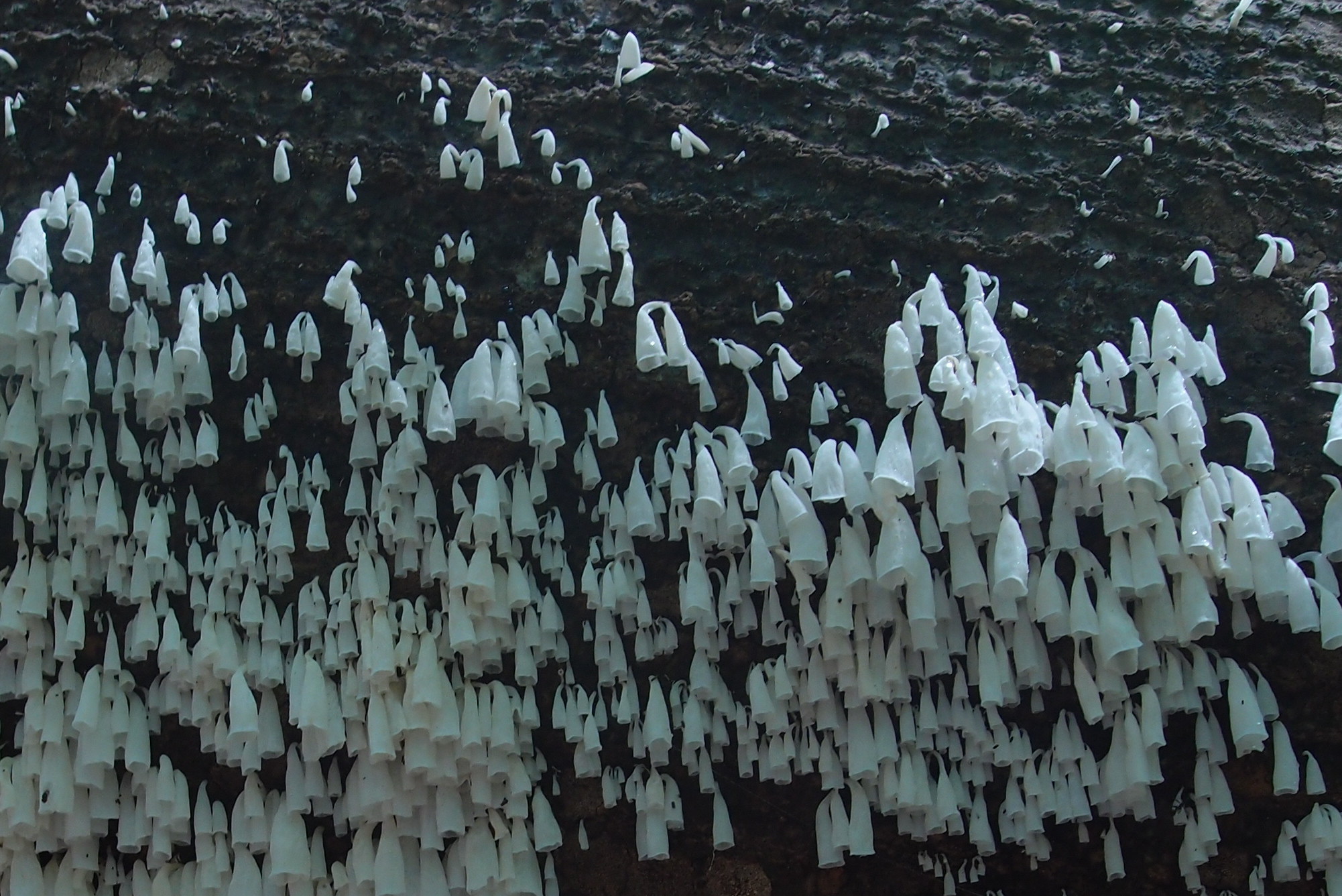|
Cora Cyphellifera
''Cora cyphellifera'' is a species of basidiolichen in the family Hygrophoraceae. Found in northern Ecuador, it was formally described as a new species in 2013 by Manuela Dal-Forno, Frank Bungartz, and Robert Lücking. The type specimen was collected near the entrance to the Alto Choco Reserve (in Cotacachi Canton, Ecuadorian Andes) at an elevation of . Here, in open, disturbed forest patches, the lichen grows as an epiphyte on tree branches and twigs, forming foliose, light bluish-green thalli up to across, and comprising 20 to 30 semicircular lobes in each thallus. ''Cora cyphellifera'' is only known to occur at the type locality, which is a montane rainforest. The specific epithet refers to the unusual cyphelloid structure (i.e., with concavities or pits in the surface) of the thallus; this characteristic is otherwise unknown in the genus ''Cora Cora may refer to: Science * ''Cora'' (fungus), a genus of lichens * ''Cora'' (damselfly), a genus of damselflies * CorA met ... [...More Info...] [...Related Items...] OR: [Wikipedia] [Google] [Baidu] |
Robert Lücking
Robert Lücking (born 1964) is a German lichenologist. He is a leading expert on foliicolous lichens–lichens that live on leaves. Life and career Born in Ulm in 1964, Lücking earned both his master's (1990) and PhD degree (1994) at the University of Ulm. Both degrees concerned the taxonomy, ecology, and biodiversity of foliicolous lichens. His graduate supervisor was mycologist and bryologist Sieghard Winkler, who had previously studied epiphyllous (upper leaf-dwelling) fungi in El Salvador and Colombia. In 1996 Lücking was awarded the Mason E. Hale award for an "outstanding doctoral thesis presented by a candidate on a lichenological theme". His thesis was titled ''Foliikole Flechten und ihre Mikrohabitatpraferenzen in einem tropischen Regenwald in Costa Rica'' ("Foliicolous lichens and their microhabitat preferences in a tropical rainforest in Costa Rica"). In this work, Lücking recorded 177 foliicolous lichen species from the shrub layer in a Costa Rican tropical forest. L ... [...More Info...] [...Related Items...] OR: [Wikipedia] [Google] [Baidu] |
Botanical Name
A botanical name is a formal scientific name conforming to the ''International Code of Nomenclature for algae, fungi, and plants'' (ICN) and, if it concerns a plant cultigen, the additional cultivar or Group epithets must conform to the '' International Code of Nomenclature for Cultivated Plants'' (ICNCP). The code of nomenclature covers "all organisms traditionally treated as algae, fungi, or plants, whether fossil or non-fossil, including blue-green algae ( Cyanobacteria), chytrids, oomycetes, slime moulds and photosynthetic protists with their taxonomically related non-photosynthetic groups (but excluding Microsporidia)." The purpose of a formal name is to have a single name that is accepted and used worldwide for a particular plant or plant group. For example, the botanical name '' Bellis perennis'' denotes a plant species which is native to most of the countries of Europe and the Middle East, where it has accumulated various names in many languages. Later, the plant w ... [...More Info...] [...Related Items...] OR: [Wikipedia] [Google] [Baidu] |
Taxa Named By Robert Lücking
In biology, a taxon (back-formation from ''taxonomy''; plural taxa) is a group of one or more populations of an organism or organisms seen by taxonomists to form a unit. Although neither is required, a taxon is usually known by a particular name and given a particular ranking, especially if and when it is accepted or becomes established. It is very common, however, for taxonomists to remain at odds over what belongs to a taxon and the criteria used for inclusion. If a taxon is given a formal scientific name, its use is then governed by one of the nomenclature codes specifying which scientific name is correct for a particular grouping. Initial attempts at classifying and ordering organisms (plants and animals) were set forth in Carl Linnaeus's system in ''Systema Naturae'', 10th edition (1758), as well as an unpublished work by Bernard and Antoine Laurent de Jussieu. The idea of a unit-based system of biological classification was first made widely available in 1805 in the intro ... [...More Info...] [...Related Items...] OR: [Wikipedia] [Google] [Baidu] |
Lichens Of Ecuador
A lichen ( , ) is a composite organism that arises from algae or cyanobacteria living among filaments of multiple fungi species in a mutualistic relationship.Introduction to Lichens – An Alliance between Kingdoms . University of California Museum of Paleontology. Lichens have properties different from those of their component organisms. They come in many colors, sizes, and forms and are sometimes plant-like, but are not s. They may have tiny, leafless branches (); flat leaf-like structures ( [...More Info...] [...Related Items...] OR: [Wikipedia] [Google] [Baidu] |
Lichens Described In 2013
A lichen ( , ) is a composite organism that arises from algae or cyanobacteria living among filaments of multiple fungi species in a mutualistic relationship.Introduction to Lichens – An Alliance between Kingdoms . University of California Museum of Paleontology. Lichens have properties different from those of their component organisms. They come in many colors, sizes, and forms and are sometimes plant-like, but are not s. They may have tiny, leafless branches (); flat leaf-like structures ( |
Cora
Cora may refer to: Science * ''Cora'' (fungus), a genus of lichens * ''Cora'' (damselfly), a genus of damselflies * CorA metal ion transporter, a Mg2+ influx system People * Cora (name), a given name and surname * Cora E. (born 1968), German hip-hop artist * Sexy Cora or Carolin Ebert (1987–2011), German actress, model, singer Places United States * Cora, Illinois * Cora, Kansas * Cora, Missouri * Cora, West Virginia * Cora, Washington * Cora, Wyoming Other places * Cora (Ancient Latin town), an ancient town in Latium (Italy) * Cori, Lazio, Italy Other uses * 504 Cora, a metallic asteroid from the middle region of the asteroid belt * Cora (hypermarket), a retail group of hypermarkets in Europe * Cora (instrument), an alternative spelling of the West African musical instrument Kora * ''Cora'' (opera), a 1791 opera by Étienne Méhul, libretto by Valadier * Cora (restaurant), a Canadian chain of casual restaurants * Cora (rocket), a French rocket * ''Cora'' (1812 ship), a ... [...More Info...] [...Related Items...] OR: [Wikipedia] [Google] [Baidu] |
Cora (fungus)
''Cora'' is a large genus of basidiolichens in the family Hygrophoraceae. Modern molecular phylogenetics research has revealed a rich biodiversity in this largely tropical genus. Taxonomy ''Cora'' was originally circumscribed by the Swedish "Father of Mycology", Elias Magnus Fries, in 1825. He included a single species, until then known as ''Thelephora pavonia'' . Until relatively recently, ''Cora'' was thought to contain one species, or was placed into synonymy with '' Dictyonema''. ''Cora'' was recognized as an independent genus separate from ''Dictyonema'' in 2013. Molecular phylogenetic analysis using DNA barcoding of the internal transcribed spacer region has revealed the existence of almost 200 species in the genus, and about 450 species are predicted to exist. Habitat and distribution Mexico and (at least formerly) Florida are the northernmost distribution points for the genus ''Cora'', while its southernmost locale is southern Chile. It has its highest biodiversity i ... [...More Info...] [...Related Items...] OR: [Wikipedia] [Google] [Baidu] |
Cyphelloid Fungi
The cyphelloid fungi are a group of fungi in the Basidiomycota that have disc-, tube-, or cup-shaped basidiocarps (fruit bodies), resembling species of discomycetes (or "cup fungi") in the Ascomycota. They were originally referred to the genus '' Cyphella'' ("cyphelloid" means ''Cyphella''-like) and subsequently to the family Cyphellaceae, but are now known to be much more diverse and are spread through several different genera and families. Since they are often studied as a group, it is convenient to call them by the informal (non-taxonomic) name of "cyphelloid fungi". Better known cyphelloid genera include ''Calyptella'', with stalked, cup- or bell-like fruit bodies; ''Lachnella'', with conspicuous, hairy-margined, disc-like fruit bodies; ''Flagelloscypha'' with smaller, but equally hairy, cup-like fruit bodies; ''Henningsomyces'' with tube-like fruit bodies; and ''Merismodes'' with clustered, hairy, cup-like fruit bodies. History The genus ''Cyphella'' was original described b ... [...More Info...] [...Related Items...] OR: [Wikipedia] [Google] [Baidu] |
Montane Ecosystems
Montane ecosystems are found on the slopes of mountains. The alpine climate in these regions strongly affects the ecosystem because temperatures fall as elevation increases, causing the ecosystem to stratify. This stratification is a crucial factor in shaping plant community, biodiversity, metabolic processes and ecosystem dynamics for montane ecosystems. Dense montane forests are common at moderate elevations, due to moderate temperatures and high rainfall. At higher elevations, the climate is harsher, with lower temperatures and higher winds, preventing the growth of trees and causing the plant community to transition to montane grasslands, shrublands or alpine tundra. Due to the unique climate conditions of montane ecosystems, they contain increased numbers of endemic species. Montane ecosystems also exhibit variation in ecosystem services, which include carbon storage and water supply. Life zones As elevation increases, the climate becomes cooler, due to a decrease in ... [...More Info...] [...Related Items...] OR: [Wikipedia] [Google] [Baidu] |
Basidiolichen
Basidiolichens are lichenized members of the Basidiomycota, a much smaller group of lichens than the far more common ascolichens in the Ascomycota. In arctic, alpine, and temperate forests, the most common basidiolichens are in the agaric genus ''Lichenomphalia'' (including former members of '' Omphalina'' or '' Gerronema'') and the clavarioid genus '' Multiclavula''. Several lichenized genera occur in tropical regions, the most common being the foliose '' Dictyonema''. Previously basidiolichens had been classified in their own subclass, Basidiolichenes. Molecular based phylogeny A phylogenetic tree (also phylogeny or evolutionary tree Felsenstein J. (2004). ''Inferring Phylogenies'' Sinauer Associates: Sunderland, MA.) is a branching diagram or a tree showing the evolutionary relationships among various biological spe ... does not support classification of the genera together. References External linksBioImagesSeveral photos of ''Lichenomphalia umbellifera''New Zea ... [...More Info...] [...Related Items...] OR: [Wikipedia] [Google] [Baidu] |
.jpg)



.jpg)

